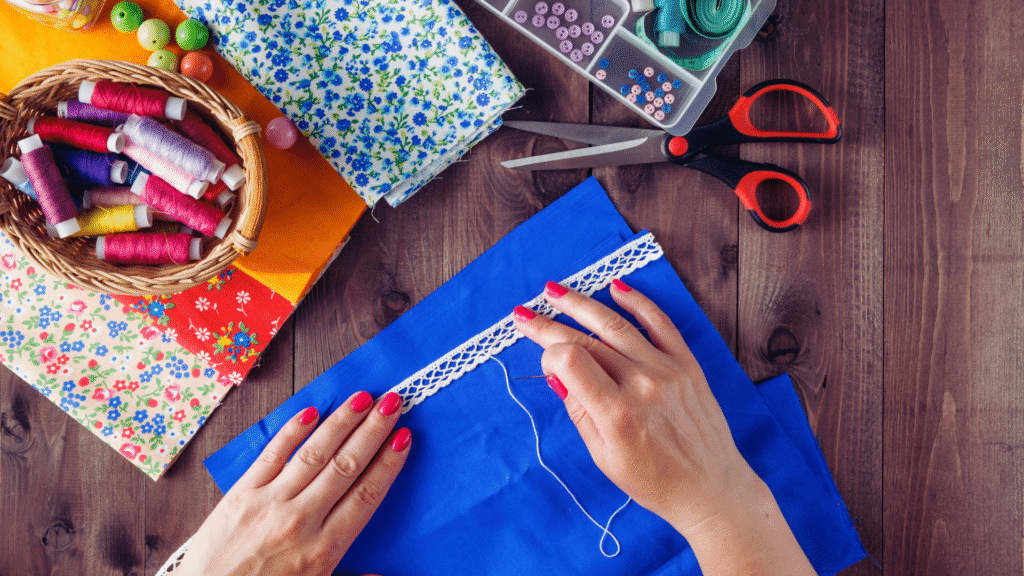Transitioning from a winter wardrobe to summer attire can feel daunting, but with a few strategic steps, it becomes manageable. To effectively take your wardrobe from winter to summer, one should focus on decluttering, opting for lighter fabrics, and creating a versatile capsule collection. This not only streamlines choices but also ensures that every piece sparks joy.
As temperatures rise, she can replace bulky knits and heavy layers with airy blouses and breathable trousers. Incorporating bright colours and playful patterns will reflect the vibrancy of the season. It is essential to assess what items can seamlessly transition into a spring wardrobe, such as lightweight jackets or pastel shades, to maintain a cohesive style.
Emphasising versatility is a crucial piece that can be layered or mixed and matched to extend the usability of a wardrobe throughout spring and into summer. Selecting items that resonate personally and bring joy will make the entire process more enjoyable and fulfilling.
Transitioning Essentials
As the seasons change, a thoughtful approach to wardrobe essentials can make the transition smoother. Focus on identifying staple pieces, investing in versatile items, and mastering the art of layering for effective seasonal adjustments.
Identifying Staple Pieces
Key staple pieces form the foundation of any wardrobe. They are versatile items that can be easily mixed and matched. Essential staples such as plain t-shirts, classic denim, and lightweight knitwear can bridge the gap between winter and summer.
Consider the details:
- Cotton t-shirts in neutral colours add breathability.
- Light denim works well in varying temperatures.
- Knitwear can be layered or worn solo on warmer days.
These pieces should be high-quality to withstand wear while maintaining their shape and style. Investing in a few hero pieces will elevate the overall look and provide flexibility.
Investing in Versatile Items
Versatile items allow for easy styling transitions. Look for pieces that can serve multiple purposes, adapting to different settings and temperatures.
Examples include:
- Wrap dresses that can be dressed up or down.
- Chino trousers that can be paired with both light and heavier tops.
- Lightweight jackets that offer warmth without being bulky.
These pieces enhance strategic layering opportunities. They ensure one can navigate both warmer and cooler days without needing a complete wardrobe overhaul.
The Art of Layering
Effective layering is crucial for transitioning between seasons. Layering not only adds style but also allows for comfort and adaptability.
Start with a base layer, such as a lightweight top. Add a mid-layer like a cardigan or a light sweatshirt for warmth. Finally, finish with an outer layer, such as a breathable jacket.
- Accessorising with scarves can provide additional warmth and style.
- Footwear choice also plays a role; opt for breathable shoes that can transition seamlessly from winter to summer.
Strategic layering helps to regulate body temperature, making it easier to adapt to fluctuating weather.
Updating Your Clothing Materials
As the seasons change, so should the materials in a wardrobe. Transitioning from heavy fabrics to lighter options will enhance comfort and style during warmer months.
From Chunky Knits to Lightweight Options
Chunky knits are synonymous with winter warmth but become impractical as temperatures rise. They can be replaced with lightweight materials such as linen or jersey. These fabrics offer breathability and a relaxed fit, essential for summer comfort.
Opt for cardigans or loose-fitting tops that can be layered or worn alone. For trousers, choose lighter cotton blends or breathable shorts. This shift not only keeps one cool but also makes for more versatile outfits. When selecting lightweight options, consider colours and patterns that reflect the season, such as pastels or floral prints, which can elevate any summer ensemble.
Incorporating Cotton and Silk
Cotton and silk are excellent fabric choices for summer. Cotton is known for its moisture-wicking properties, making it perfect for hot weather. It allows for easy movement and comes in various styles, from T-shirts to dresses.
Silk, while a more luxurious option, offers natural temperature regulation. It is lightweight and adds a touch of elegance to summer outfits. Consider silk blouses or cotton sundresses for both comfort and style. When incorporating these fabrics, ensure proper care to maintain their quality and longevity, especially silk, which may require delicate washing methods. Prioritising these materials during seasonal transitions can significantly enhance one’s summer wardrobe.
Footwear Transition Strategies
As seasons change, footwear choices should adapt to enhance comfort and style. Transitioning from heavier, insulated footwear to lighter options can significantly transform an outfit.
Shifting from Boots to Lighter Footwear
Moving away from winter boots can create a refreshing change. Ankle boots are suitable for transitional weather, providing coverage while allowing breathability. As temperatures rise, consider trainers or sandals.
Key options include:
- Trainers: Ideal for casual wear, available in various styles and colours.
- Sandals: Perfect for warmer days, offering styles from comfortable flip-flops to more structured designs.
When selecting lighter footwear, focus on materials. Breathable fabrics such as canvas or leather can prevent overheating. Additionally, consider colour selection; lighter shades tend to complement summer outfits.
Choosing Between Ballet Flats and Loafers
Ballet flats and loafers present two stylish options as spring approaches. Ballet flats are versatile and easily paired with dresses or trousers. They offer a feminine touch and come in an array of patterns and colours.
On the other hand, loafers provide a more structured look. They are suitable for both casual and smart-casual settings. Loafers are often made from durable materials, making them a good investment for varied occasions.
When deciding, consider the following:
- Comfort: Ensure the chosen style supports your foot well.
- Occasion: Ballet flats may suit casual outings, while loafers often fit professional environments better.
Balancing comfort and style will help in making the right choice for each occasion.
Outerwear Adaptation
As temperatures rise, modifying outerwear is essential to transition from winter garments. This involves replacing heavy coats with lighter alternatives that provide comfort and style.
Swapping Heavy Coats for Trenches and Blazers
Heavy winter coats can weigh down a summer wardrobe. A trench coat is an excellent alternative, offering both style and practicality. It provides a sophisticated layering option, suitable for both casual and formal occasions.
Blazers are another versatile choice. They can elevate an outfit while adding structure. Opt for lightweight fabrics such as cotton or linen to maintain comfort.
Denim jackets also work well in warmer months. They add a casual touch to any outfit and layer nicely over summer dresses or casual tops. Consider incorporating different colours and textures to refresh the look.





